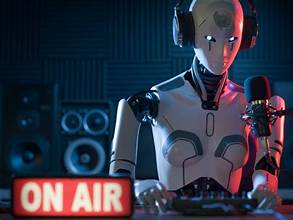The rapid advancement of artificial intelligence (AI) is reshaping industries worldwide, from healthcare to finance, education, and entertainment. While many sectors have welcomed AI with open arms, the broadcasting industry in Australia has recently found itself at the center of heated debate. The introduction of an AI radio host by an Australian station has sparked significant backlash from listeners, broadcasters, and industry experts. This development has raised essential questions about the future of media, the value of human touch in broadcasting, and the broader implications of replacing human roles with AI.
The Emergence of the AI Radio Host
The Australian radio station in question recently unveiled its first-ever AI-generated host, designed to deliver music segments, interact with audiences, and share news updates. Powered by advanced natural language processing and machine learning algorithms, the AI host mimics a human presenter’s voice, tone, and conversational style. Its creators argued that it could provide around-the-clock content without fatigue, sick leave, or scheduling conflicts.
For management, the appeal was clear: efficiency, cost-cutting, and innovation. In an increasingly competitive media landscape, stations are under pressure to adopt new technologies to attract audiences. By introducing AI into broadcasting, the station aimed to stay ahead of the curve, branding itself as modern, futuristic, and technologically savvy.
However, this bold move did not land as expected.
Public Backlash and Listener Concerns
The announcement was met with immediate criticism from regular listeners. Many fans of the station voiced frustration over what they perceived as the loss of authenticity and emotional connection. Unlike human hosts, who share personal anecdotes, laughter, and real-time reactions, an AI voice—no matter how polished—struggles to replicate the nuances of genuine human interaction.
Listeners pointed out that radio is more than just music or news; it’s about companionship. For decades, Australians have turned to radio not only for information but also for the familiar voices that keep them company during commutes, workdays, or late nights. Replacing a trusted human host with an AI felt impersonal to many. Social media platforms quickly became flooded with comments, memes, and hashtags criticizing the move, reflecting the emotional attachment audiences have to human broadcasters.
Concerns from Industry Professionals
Beyond the listeners, the backlash extended to within the broadcasting industry itself. Veteran radio hosts and journalists expressed concerns about job security. Many feared that if one station could successfully integrate AI into its hosting lineup, others might follow suit, leading to widespread displacement of human talent.
Some professionals also questioned the ethical implications of using AI in a field historically built on personal storytelling and human connection. A well-known Australian broadcaster remarked that radio thrives because of “the human voice that reflects the community’s heartbeat.” An AI, no matter how advanced, cannot replicate lived experiences, humor, or empathy in the same way.

The Broader Debate: Innovation vs. Human Connection
The controversy over the AI host shines a spotlight on a larger, global conversation: how far should industries go in replacing humans with machines? On the one hand, innovation brings undeniable benefits—cost savings, efficiency, and the ability to provide services 24/7. On the other hand, industries rooted in creativity, empathy, and human emotion risk losing their essence if they lean too heavily on automation.
For many critics, the issue is not simply about AI technology but about balance. While AI can assist in certain areas, completely removing human presence from broadcasting could alienate audiences. The backlash in Australia underscores that the radio industry must tread carefully when incorporating AI into its operations.
AI Host Sparks Backlash Against Australian Radio Station
Potential Benefits of AI in Broadcasting
Despite the criticism, it’s important to acknowledge that AI does offer certain advantages in the broadcasting world. For example:
- Round-the-clock availability: AI hosts can keep programming running seamlessly even during off-peak hours.
- Consistency: Unlike humans, AI voices remain uniform and can maintain the same tone throughout.
- Personalization: With advanced algorithms, AI can tailor playlists, news updates, and advertisements to specific audience preferences.
- Cost reduction: Stations may save on salaries and operational costs, making AI an attractive option for budget-strapped organizations.
These advantages explain why some media executives remain optimistic about AI’s role, even in the face of public criticism.

Risks and Drawbacks of AI Hosts
However, the backlash illustrates that benefits must be weighed against risks. The primary drawbacks include:
- Loss of authenticity: AI voices may sound natural but cannot replicate the warmth and relatability of a human host.
- Job displacement: Human broadcasters risk losing employment opportunities as stations turn to AI for cost-cutting.
- Audience alienation: Loyal listeners may abandon stations they feel are becoming too impersonal.
- Ethical concerns: Over-reliance on AI raises questions about transparency—should audiences always know whether they’re listening to a machine or a person?
The Human Touch in Media
At its core, the debate emphasizes the irreplaceable value of human connection in media. Listeners often develop strong bonds with their favorite radio hosts, who become part of their daily routines. The jokes, mistakes, pauses, and unscripted moments that occur during live broadcasts add character and relatability—qualities that AI cannot yet replicate.
While some audiences may eventually adapt to AI hosts, others may feel alienated, seeking out alternatives that preserve the human voice in broadcasting. This tension highlights the importance of maintaining a balance between embracing new technologies and preserving human storytelling traditions.
What Lies Ahead for Australian Broadcasting?
In the wake of the backlash, the Australian radio station has found itself at a crossroads. Should it double down on AI, banking on technological progress and eventual audience acceptance? Or should it scale back its use, integrating AI in support roles while keeping human hosts at the forefront?
Experts suggest a hybrid model may offer the best path forward. AI could be used for late-night slots, weather updates, or administrative tasks, while human presenters handle peak hours and programs that require audience interaction. This compromise would allow stations to benefit from technology without alienating their loyal listener base.
Conclusion
The controversy surrounding the Australian radio station’s AI host highlights a pivotal moment in the evolution of broadcasting. While AI offers efficiency and innovation, it also risks eroding the emotional bonds that listeners have with human hosts. The backlash demonstrates that audiences still value authenticity, empathy, and the irreplaceable human touch.
As Australia and the global broadcasting industry navigate this transition, one thing is clear: technology alone cannot sustain the magic of radio. The future likely belongs to a blended approach, where humans and AI work together, preserving the heart of broadcasting while embracing the opportunities of innovation.



